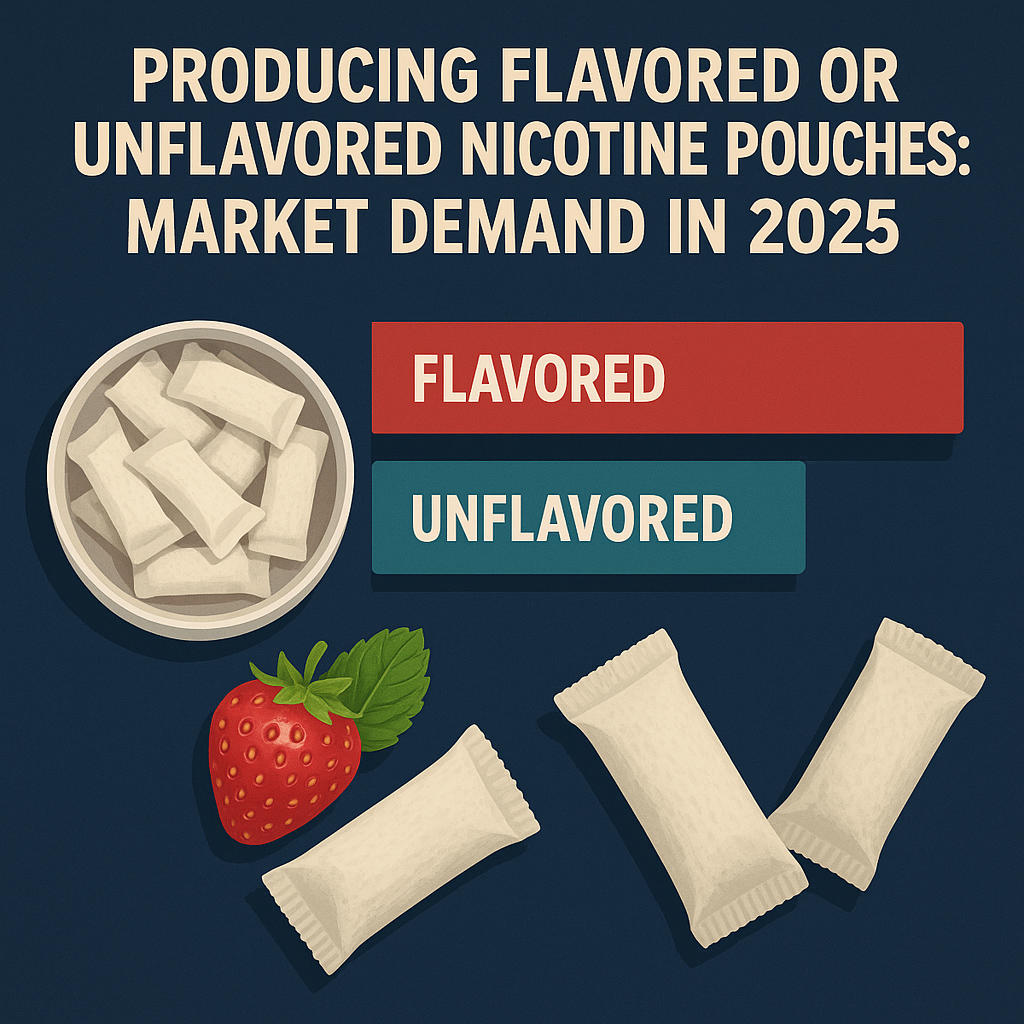
The Asian nicotine pouch market is a gold rush in the making. Fueled by growing consumer preferences and a growing demand for alternatives, this region is brimming with untapped potential.
But success here isn’t just about knowing the numbers. It’s about understanding Asian consumers, working within diverse regulations, and aligning with emerging trends. It’s about identifying the next big market and learning from the brands that are already winning.
This guide is your key to staking your claim in this gold rush. We’ll delve into market growth, consumer trends, and regulatory landscapes, uncovering the secrets of successful Asian brands and the future trends that will shape this industry.
Whether you’re a seasoned player or a newcomer, this guide will arm you with the knowledge to make your mark in Asia’s nicotine pouch boom.
Regulatory Roadmaps: Your Ticket to Success
Getting around Asia’s varying regulation is no easy feat. Each country has its own unique set of rules and restrictions governing the sale, distribution, and marketing of nicotine pouches. But instead of seeing these regulations as roadblocks, savvy businesses view them as roadmaps to success.
Here’s a quick snapshot of the regulatory terrain in key Asian markets:
Japan:
- Status: Nicotine pouches are classified as pharmaceutical products, requiring a license that hasn’t been granted yet. Snus, however, remains legal.
- Opportunity: Despite the regulatory hurdles, Japan’s market for reduced-risk nicotine products is booming. With a projected decrease in smoking prevalence to 18% by 2025, there’s a massive opportunity for innovative products that cater to this growing demand.
South Korea:
- Status: Nicotine pouches are categorized as tobacco products, facing high taxes and strict advertising limitations.
- Opportunity: The market is still nascent, but younger consumers are increasingly embracing flavored and strong nicotine pouches as a less harmful alternative to smoking.
China:
- Status: Regulatory frameworks for nicotine pouches are still under development, presenting significant challenges due to strict control over tobacco products.
- Opportunity: Despite the barriers, the sheer size of China’s smoking population makes it a market with immense potential once regulations are clarified.
India:
- Status: Nicotine products, including pouches, are tightly regulated to prevent underage use.
- Opportunity: India’s high smoking rate and growing interest in harm reduction products signal a substantial market waiting to be tapped.
Understanding the rules isn’t just about compliance – it’s about identifying strategic advantages. Knowing where regulations are looser can reveal untapped markets, while stricter regulations might signal a need for innovative product development or targeted marketing strategies. The key is to stay informed and adapt your approach accordingly.
Asia’s Untapped Nicotine Pouch Frontier: Emerging Markets on the Rise
While the spotlight often shines on major players like Japan and South Korea, several emerging nicotine pouch markets in Asia are quietly heating up. These markets present unique opportunities for those willing to venture off the beaten path.
- Indonesia: This smoking hotspot boasts one of the world’s largest smoking populations, creating fertile ground for nicotine pouch adoption. The regulatory environment is still evolving, prioritizing safety and distribution control, giving early adopters an opportunity to establish a strong position. Younger consumers are particularly drawn to flavored and strong nicotine pouches, mirroring trends seen in other parts of Asia.
- Malaysia: Strict regulations are in place to ensure product safety and prevent youth access, including advertising and packaging restrictions. However, public health campaigns and rising consumer awareness are driving a growing market for nicotine pouches. Malaysian consumers prefer discreet, flavored pouches, aligning with global trends towards convenience and appeal.
- Philippines: With a high smoking prevalence, the Philippines offers a significant market opportunity for harm reduction products like nicotine pouches. The government is actively working on a clear regulatory framework, presenting both challenges and opportunities for businesses. Urban youth are leading the charge in adopting flavored pouches as a less harmful alternative to traditional smoking.
- Thailand: This emerging market is experiencing steady growth, with the government developing regulations focused on controlling sales and distribution. This indicates a commitment to responsible market growth. Health-conscious Thai consumers are increasingly seeking smoke-free alternatives, and flavored, low-nicotine pouches are gaining popularity.
- Vietnam: In Vietnam, nicotine pouches are seen as a potential tool for smoking cessation, aligning with the broader regional trend towards harm reduction. The country is in the process of defining its regulatory approach, requiring businesses to stay agile and adaptable. While long-term impacts remain a concern, there’s optimism that nicotine pouches could help reduce smoking rates and improve public health outcomes.
These emerging markets offer a glimpse into the future of the Asian nicotine pouch landscape. With their diverse consumer preferences, evolving regulations, and significant growth potential, they represent an exciting frontier for those willing to explore new territories.
Asia’s Flavor Frenzy: Where Taste Meets Nicotine
Let’s face it, taste matters. And in the Asian nicotine pouch market, it’s not just about the nicotine hit—it’s about the entire sensory experience.
Flavor Explosion: Asian consumers have a taste for adventure, and they’re not afraid to try new things. This is reflected in the demand for unique and diverse flavor profiles in nicotine pouches. Tropical fruits like mango, lychee, and passionfruit are hot commodities, but so are traditional Asian favorites like milk tea, green tea, and even red bean. The brands that cater to these diverse palates are winning big.
Strength in Variety: While some folks prefer a milder experience, many Asian markets, particularly South Korea, are all about that high-nicotine kick. This is especially true among younger users and those transitioning from cigarettes who are looking for a similar intensity.
Discretion is Golden: Convenience and discretion are valued highly in many Asian cultures. Nicotine pouches, being small, portable, and smoke-free, offer a discreet way to enjoy nicotine on the go or in places where smoking isn’t allowed. This aligns with the growing popularity of heated tobacco products (HTPs) in Japan, which are seen as a less intrusive alternative to cigarettes.
Social Media Sizzle: Social platforms like Instagram and TikTok are playing a massive role in fueling the nicotine pouch craze. Influencers and online communities are normalizing pouch use, creating a sense of belonging among users, and showcasing the latest and greatest flavors.
Recognizing these distinct preferences is your ticket to success in this thriving market. Brands that tap into these flavor trends and tailor their products, marketing, and distribution accordingly will be the ones who win over Asian consumers and capture a piece of this exciting pie.
Rising Stars: The Nicotine Pouch Brands Making Waves in Emerging Asian Markets
While global giants like ZYN, VELO, and On! are making their mark in Asia, it’s the brands operating in the unique landscapes of emerging markets that are truly capturing attention.
Philippines:
- Local Favorites: Brands like Ace, ICE, Paz, Siberia, White Fox, Bingbong, and Bagz have carved out a niche in the Philippines, offering a diverse range of flavors and strengths tailored to local preferences.
- Consumer-Driven Innovation: These brands are responding to the growing demand for nicotine pouches by constantly introducing new and exciting flavors, catering to the adventurous palates of Filipino consumers.
Indonesia:
- Rising Interest: There’s a growing interest in international brands like ZYN and VELO, particularly among younger consumers seeking healthier alternatives to smoking.
- Untapped Potential: The Indonesian market is ripe with opportunity, and brands that can quickly adjust to the evolving regulatory landscape and connect with local consumers are poised for significant growth.
Malaysia:
- Established Players: ZYN, VELO, On!, and LYFT have already established a presence in Malaysia, offering a wide range of options to cater to diverse preferences.
- Regulatory Compliance: These brands have successfully adjust to Malaysia’s stringent regulations, ensuring product safety and responsible marketing practices.
Thailand:
- Emerging Brands: ZYN, VELO, and Skruf are among the brands that have made early inroads in Thailand’s emerging nicotine pouch market.
- Focus on Flavor and Health: These brands are catering to the health-conscious Thai consumer, offering flavored and low-nicotine options that align with the growing demand for smoke-free alternatives.
Vietnam:
- Anticipation for International Brands: While regulations are still being defined, major international brands like ZYN, VELO, and On! are preparing to enter the Vietnamese market, anticipating a surge in demand as consumer awareness grows.
- Local Brands on the Horizon: Keep an eye out for local Vietnamese brands that are also poised to enter the market, potentially offering unique flavor profiles and cultural relevance to resonate with local consumers.
The nicotine pouch scene in emerging Asian markets is fast-paced and ever-changing. While global brands are making their presence felt, local players and those who can quickly adapt to the unique demands of each market are the ones to watch. As regulations continue to evolve and consumer awareness grows, the opportunities for growth and innovation in these markets are immense.
Public Health and Future Outlook: Navigating a Shifting Landscape
The ascent of nicotine pouches in Asia presents a complex narrative for public health. While they hold promise as a harm reduction tool for existing smokers, concerns linger over their long-term effects and potential for youth appeal. This tension is shaping both the present and future of the Asian nicotine pouch market.
Less Harmful, Not Harmless:
Nicotine pouches, unlike combustible tobacco products, deliver nicotine without tar, carbon monoxide, and many other toxic chemicals. This makes them a potentially less harmful option for current smokers. Some studies even suggest they may be an effective aid in smoking cessation efforts. However, it’s crucial to remember that “less harmful” does not equate to “harmless.” Nicotine itself is highly addictive, regardless of the delivery method. Overuse or abuse of nicotine pouches can lead to dependence.
The Need for Vigilance:
While the harm reduction potential is significant, it’s crucial to acknowledge the risks. There’s a valid concern that pouches could hook a new generation, especially younger consumers who might be drawn to their flavors and discreetness. Furthermore, the long-term health effects of nicotine pouch use are still being studied, with potential cardiovascular and oral health risks under scrutiny.
Balancing Progress and Protection:
Navigating this landscape requires a delicate balancing act. As the market grows, so too must regulatory oversight to ensure product safety, responsible marketing, and age restrictions. Public health initiatives need to educate consumers about both the potential benefits and risks of nicotine pouches, fostering informed decision-making.
Looking Ahead:
The future of the Asian nicotine pouch market is poised for both growth and evolution. Here’s what we can expect:
- Regulatory Shifts: Countries will continue to refine their regulatory frameworks, adapting to the changing landscape and addressing concerns about youth access and potential health risks.
- Technological Advancements: New technologies and delivery systems are likely to emerge, potentially offering even safer and more effective nicotine alternatives.
- Product Innovation: Expect to see a wider variety of flavors, nicotine strengths, and formats as brands compete to capture different consumer segments.
- Market Expansion: Emerging markets like Indonesia, Malaysia, Thailand, and Vietnam are set for significant growth as consumer awareness increases and regulations evolve.
The Path Forward:
Prioritizing consumer safety, responsible marketing, and scientific research can help us harness the potential of these products to reduce the harm caused by smoking while mitigating the risks. The future of nicotine consumption in Asia is being written now, and it’s up to all stakeholders to shape a path that prioritizes both public health and innovation.
Asia’s Nicotine Pouch Frontier: Your Move
The Asian nicotine pouch market is ripe with potential for those willing to seize it. From the bustling streets of Tokyo to the busy markets of Manila, consumers are embracing this new way to enjoy nicotine.
The brands that understand and cater to Asia’s unique tastes, cultural nuances, and regulatory environments will be the ones who win big. It’s a market that demands innovation, agility, and a commitment to responsible practices.
So, are you ready to make your move? The Asian nicotine pouch gold rush is on, and the future of this exciting industry is being written right now. Are you ready to be a part of it?











